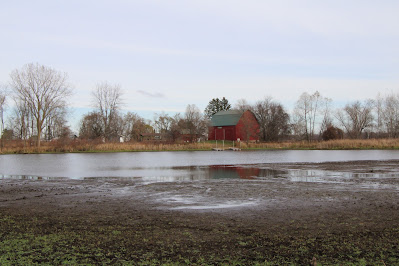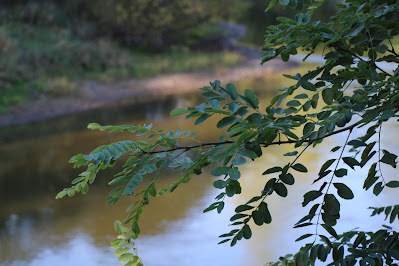The early morning temperatures are in the low 30’s under cloudy skies as I enter a narrow, snow-covered trail that winds its way through a dense forest of aging conifers on the east side of Alma’s Conservation Park (stock photo). The trail then curves south past a variety of tree trunks. Because Red Pine trees grow tall and straight and the wood is strong, they are often lumbered for utility poles. The trail then curves north past a Boxelder tree. Box elders are generally considered a “weedy” tree and are held in pretty low regard by most people. They reproduce and spread rapidly as well as hosting swarms of Box Elder bugs. The trail then curves east past a young Maple tree. Dead leaves sometimes stay on trees because their abscission layer is not fully developed, allowing them to remain attached through winter, potentially protecting buds from harsh weather, deterring browsing animals like deer, or providing a layer of insulation. This phenomenon is most commonly seen on Beech trees. The trail proceeds south and then to the southeast past a large Maple trunk. Sap flow in early winter is primarily caused by the temperature fluctuations needed for it to run, with freezing nights and warmer days being the ideal conditions. The trail then curves back to the east past a Red Cedar Tree. A significant source of food and shelter for wildlife. The blue fruits on the female trees are consumed by a wide variety of wildlife, including the Cedar Waxwing songbird, which is named for this tree. The trail loops back to the west where crows are heard. American Crows can be considered partially migratory. That is, some populations migrate, others are resident, and in others only some of the crows migrate. These crows in the southern parts of their range appear to be resident and do not migrate. The trail then turns back to the east where I see Red squirrel tracks. These squirrels mainly feed on the seeds and cones of evergreen trees. However, they will also eat bird eggs, berries, and fruit when they are available. During the summer, they collect and hide seeds and nuts so they have food storage during winter. Next, the trail curves back to the west to the edge of the forest. The trail then proceeds west across the easement. Prairies are temperate grasslands made up mostly of warm season grasses, sedges, and flowering plants such as Sunflowers, Cone flowers and Bergamot.These ecosystems are among the most decimated and threatened natural communities in the Midwest. Finally, the trail turns sharply to the north and proceeds to the end.
Winter arrives
December departs
Over the snow
Red squirrel darts
Clouds of gray
Pines of green
Among branches
Bluejay seen
Ice-covered pond
Descending fog
Tracks on trail
Moss on log
D. DeGraaf
















